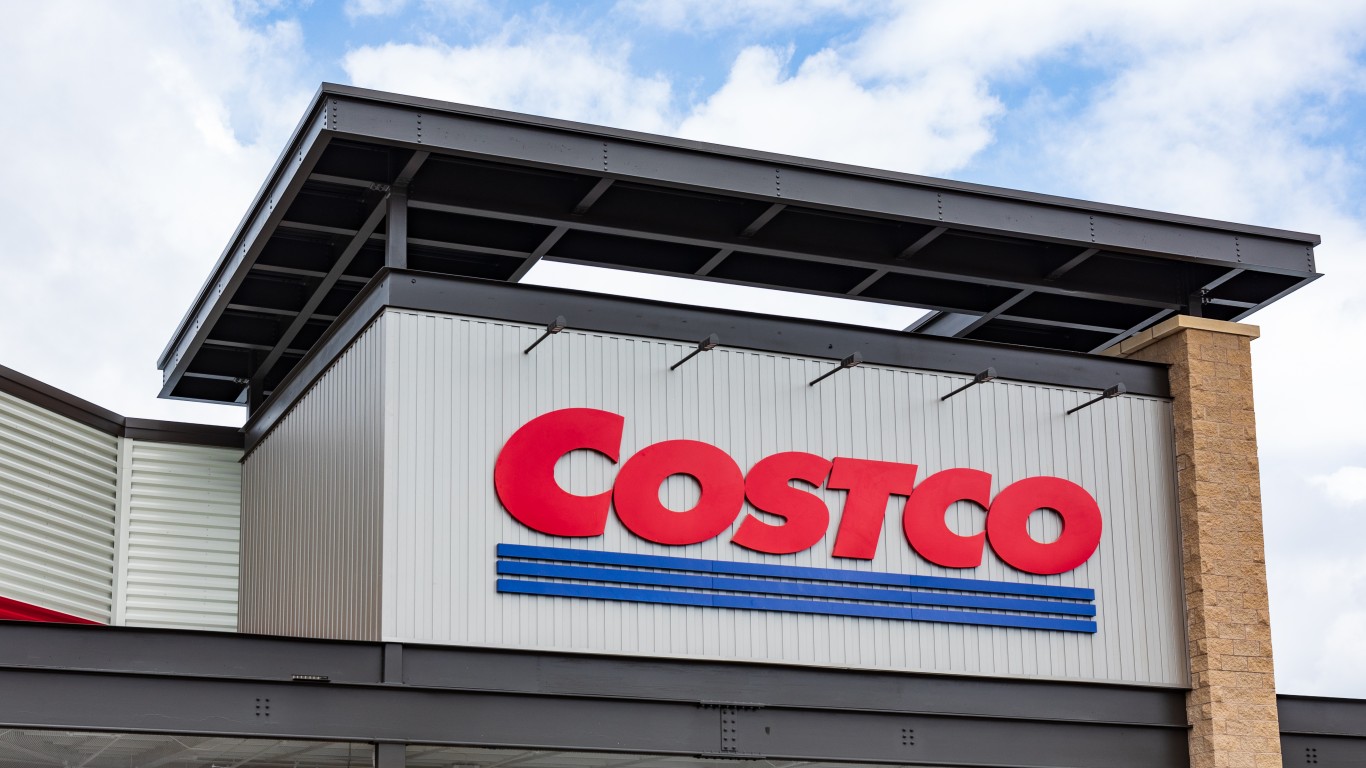
BJ’s Wholesale Club Holdings Inc. (NYSE: BJ) is not a national box store chain. It has a club fee of $55 or $110 per year that is similar to other box stores, but its 217 stores are located in just 16 states located in the eastern half of the country. It’s one thing to say that BJ’s beat its earnings expectations, but it’s another to wonder if BJ’s eventually could become the next Costco Wholesale Corp. (NASDAQ: COST), or even the next Sam’s Club.
While BJ’s reported that quarterly net sales rose by 1.1% to $3.3 billion, comparable club sales (excluding gasoline) at BJ’s rose by 1.6%, and the company’s income from continuing operations was $54.3 million. Its adjusted earnings per share came to $0.39, and BJ’s used $63.5 million in cash for share repurchases and $66.7 million to pay down debt.
For the year, BJ’s offered sales guidance of $12.9 billion to $13.2 billion, with income from operations of $200 million to $212 million and earnings of $1.42 to $1.50 per share.
Where things get interesting is that BJ’s Wholesale seems to have gotten way out ahead of the trade war turbulence regarding China for its in-store goods. CEO Christopher Baldwin told analysts on its earnings conference call that more than 90% of BJ’s apparel came from China and Vietnam about three years ago, but this year that figure represents less than 10%. Chinese-sourced goods are now said to represent roughly 3% of BJ’s cost of sales. Baldwin also expects that the percentage of China exposure will go even lower this year.
All in all, that should give BJ’s much lower exposure to Chinese tariffs and many other retailers. The company is also seeing stronger gains from digital sales. Baldwin said:
Second quarter results for sales and earnings were in line with our expectations. We delivered improved margins and continued to grow earnings as we executed against our strategic priorities. Our sales were particularly strong in the second half of the quarter as weather improved, and we ended with strong momentum. We are confident that we will deliver on our full-year expectations as we continue to transform BJ’s Wholesale Club.
A retail stock should earn praise after a 16% post-earnings gain. That said, BJ’s has a market cap of only about $3.6 billion. As for Costco, its market cap is now about $122 billion. Costco’s revenues were $141.5 billion in its fiscal year 2018, and its net income from continuing operations was $3.17 billion.
BJ’s had $12.75 billion in sales in its fiscal year 2018 reporting period, while net income from continuing operations was just $52 million. For its most recent year, BJ’s had sales of $13 billion and net income from continuing operations was $127 million.
The 2018 IPO of $17 per share ended up closing near $22 its first day out, and its 52-week trading range of $19.31 to $32.92 is against a post-earnings price of just over $26.
BJ’s Wholesale was taken private in 2011 by private equity groups Leonard Green & Partners and CVC Capital Partners in a $2.8 billion cash acquisition. On June 27, 2019, CVC Beacon completed the registered sale of 9,977,024 shares of BJ’s common stock (at $25.41 per share), and that was a final exit of its position in BJ’s. The company itself repurchased 2.5 million at the same $25.41 per share price.
The consensus analyst target price from Refinitiv was $30.27, and Goldman Sachs initiated coverage with a Buy rating and a $29 target price in July.
One issue that makes it hard to factor in for club-stores and box stores is that annual membership fees are the primary income source. BJ’s saw its membership fee income rise 6% from a year earlier to $74.7 million in its last quarter, so it would make no real profits outside of that membership fee contribution. If you add it all up, BJ’s comes with lower operating margins and profit margins than Costco.
Another issue that will keep BJ’s in a different classification from Costco, outside of the total store count, is that Costco operates in many countries now. As of June 5, 2019, Costco operated 773 membership warehouses. That tally was said to include 536 warehouses in the United States and Puerto Rico and another 100 in Canada, with additional stores as follows: 39 in Mexico, 28 in the United Kingdom, 26 in Japan, 16 in Korea, 13 in Taiwan, 11 in Australia, two in Spain, one in Iceland and one in France.
There is obviously greater room for BJ’s to expand into new markets where Costco and Sam’s compete, but there is also the risk that many of those other markets are already saturated and that members of one box club might not want to pay yet another membership fee just because a retailer opens shop there.
After looking over the numbers and factoring in margins, opportunities and some of the physical limitations that might be out there, it seems a lot easier to ask if a company can become the next behemoth to challenge its much larger rivals than it is to see it actually happen.
It’s Your Money, Your Future—Own It (sponsor)
Are you ahead, or behind on retirement? For families with more than $500,000 saved for retirement, finding a financial advisor who puts your interest first can be the difference, and today it’s easier than ever. SmartAsset’s free tool matches you with up to three fiduciary financial advisors who serve your area in minutes. Each advisor has been carefully vetted and must act in your best interests. Start your search now.
If you’ve saved and built a substantial nest egg for you and your family, don’t delay; get started right here and help your retirement dreams become a retirement reality.
Thank you for reading! Have some feedback for us?
Contact the 24/7 Wall St. editorial team.
 24/7 Wall St.
24/7 Wall St.


